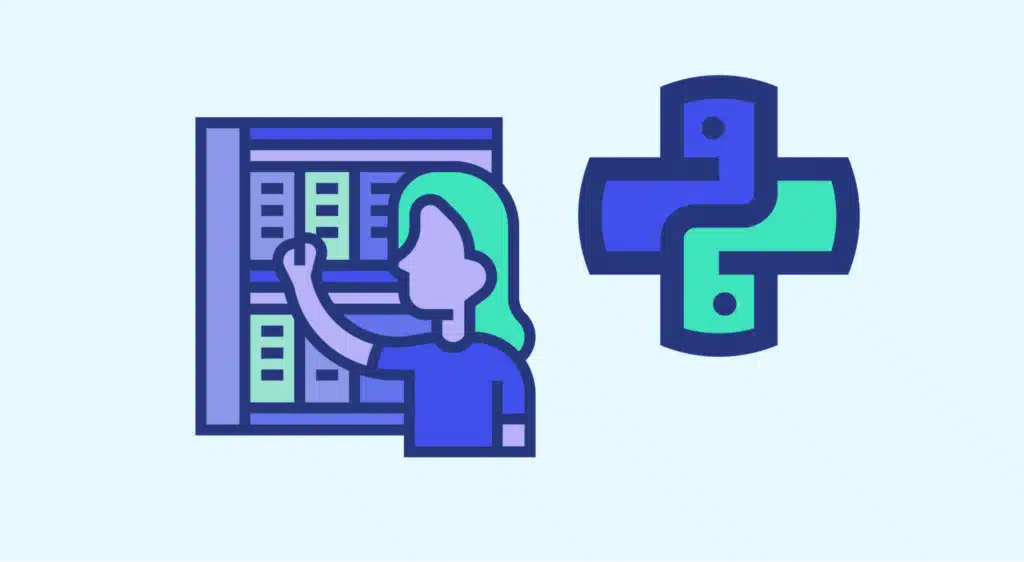NLTK is a Python library dedicated to Natural Language Processing. Find out everything you need to know to master this tool.
Interaction between humans and machines has long involved keyboards and computer code. But what if it were possible to communicate with a computer solely in writing or orally in natural language, just as you would with another human? This is the aim of Natural Language Processing.
What is natural language processing?
Natural Language Processing (NLP) is a branch of artificial intelligence. Its aim is to enable humans to interact with computers using natural language.
Thanks to this technology, machines will eventually be able to decipher and understand human language. To achieve this goal, various models, techniques and programming language libraries have been developed.
The aim? To train computers to process text, understand it, make predictions based on it or even generate new texts, as in the case of GTP-3 AI.
Training computers, also known as Machine Learning, involves first aggregating data and using it to “feed” a model. This data is then processed by the model, which learns to classify it.
What's NLP for?
Every day, web pages, blogs and social networks generate immense amounts of data in the form of text. By analyzing this data, companies can understand web users and their interests, and develop new products and services.
Natural Language Processing is used in many ways. Search engines like Google and Yahoo rely on this technology to understand the meaning of web searches.
Social networks like Facebook analyze users’ interests to offer them targeted advertising or present relevant content in their news feeds. Voice assistants like Apple Siri or Amazon Alexa also rely on NLP, as do spam filters.
What is NLTK?
The NLTK, or Natural Language Toolkit, is a suite of software libraries and programs. It is designed for symbolic and statistical natural processing of English into Python. It is one of the most powerful natural language processing libraries available.
This suite of tools brings together the most common algorithms in natural language processing, such as tokenizing, part-of-speech tagging, stemming, sentiment analysis, topic segmentation and named entity recognition.
The different NLTK algorithms
Tokenization is the process of dividing a text into several sub-sections called tokens. This method extracts statistics from the text corpus, such as the number of sentences.
These statistics can then be used to adjust parameters when training a model. This technique is also used to find patterns in the text, which are essential for natural language processing tasks.
Stemming converts a set of words in a sentence into a sequence, standardizing words that have the same meaning but vary according to context. The aim is to find the root from the different variations of the word. NLTK includes several stemmers, such as Porter Stemmer, Snowball Stemmer and Lancaster Stemmer.
The Lemmatization technique is an algorithmic process for finding the lemma of a word based on its meaning. It involves morphological analysis of words, with the aim of removing affixes. On NTLK, WordNet’s native morph function is used for Lemmatization.
Lemmatization can be performed with or without a POS tag or part-of-speech tag. The latter involves assigning a tag to each word to increase the word’s accuracy in the context of the dataset. This tag is used, for example, to indicate whether the word is a verb or an adjective, so that the system knows which affix to add to the lemma.
Other natural language processing libraries
There are numerous software libraries dedicated to natural language processing. These include spaCy, which is fully optimized and widely used in Deep Learning.
The TextBlob library works with Python 2 and 3 and can process text data. On the Open Source side, Genism is highly efficient and extensible.
Pattern is a lightweight NLP module used mainly for web-mining and crawling. For massively multilingual applications, Polyglot is the best choice.
For parsing multiple data formats such as FoLiA/Giza/Moses/ARPA/Timbl/CQL, we use PyNLPI or Pineapple. Finally, Vocabulary is very useful for extracting semantic information from text. However, the most widely used NLP library is NLTK.
Pourquoi et comment apprendre à utiliser NLTK ?
Learning to use NLTK is a very useful skill, and indispensable for natural language processing (NLP). Generally speaking, it’s a must-have tool for working in artificial intelligence and Machine Learning.
To master this suite of tools, you can opt for DataScientest’s training courses. AI and its various branches, such as Deep Learning and NLP, are at the heart of our Data Analyst, Data Scientist and ML Engineer training courses, as are the Python language and its libraries.
Our various courses enable you to be trained quickly and efficiently in the Data Science professions. Each course can be taken as a Bootcamp or Continuing Education, and adopts a blended learning approach combining physical and distance learning.
These courses are eligible for the CPF, and can also be financed by Pôle Emploi via the AIF in France or the Bildungsgutschein in Germany. On completion of the program, you will receive a diploma certified by Sorbonne University. Don’t wait any longer and discover our training courses!










